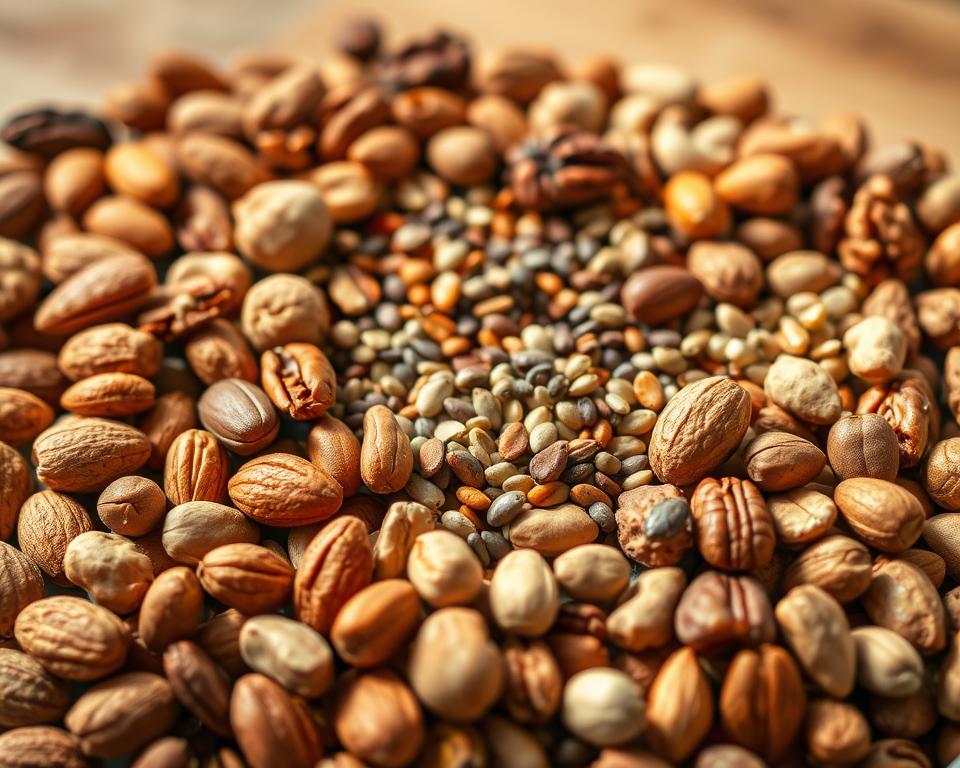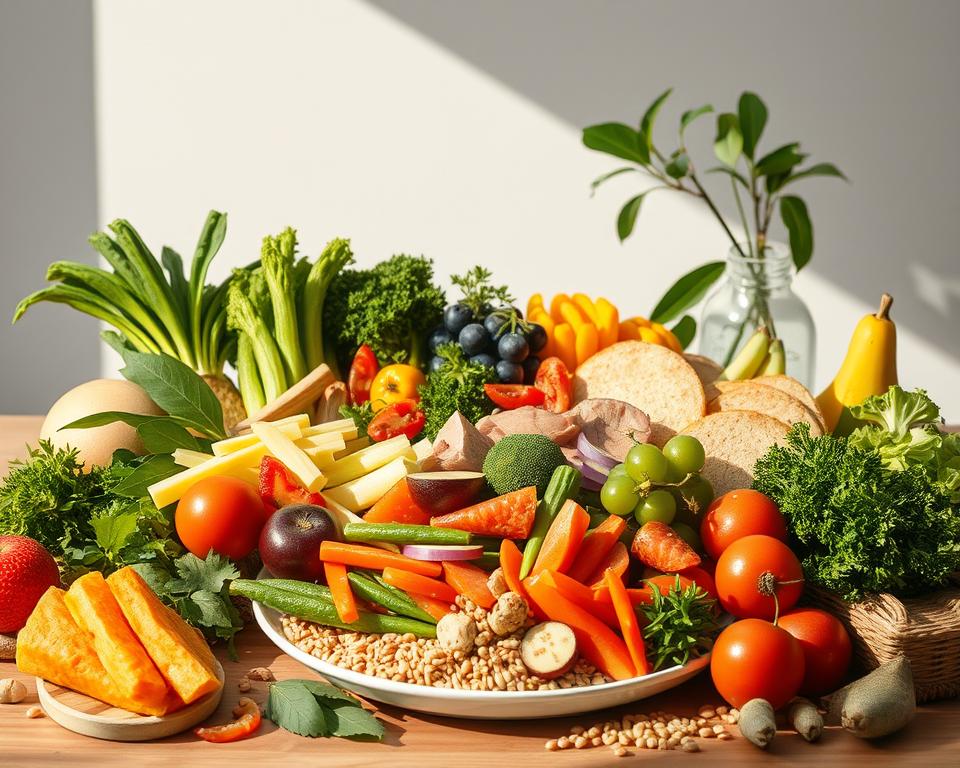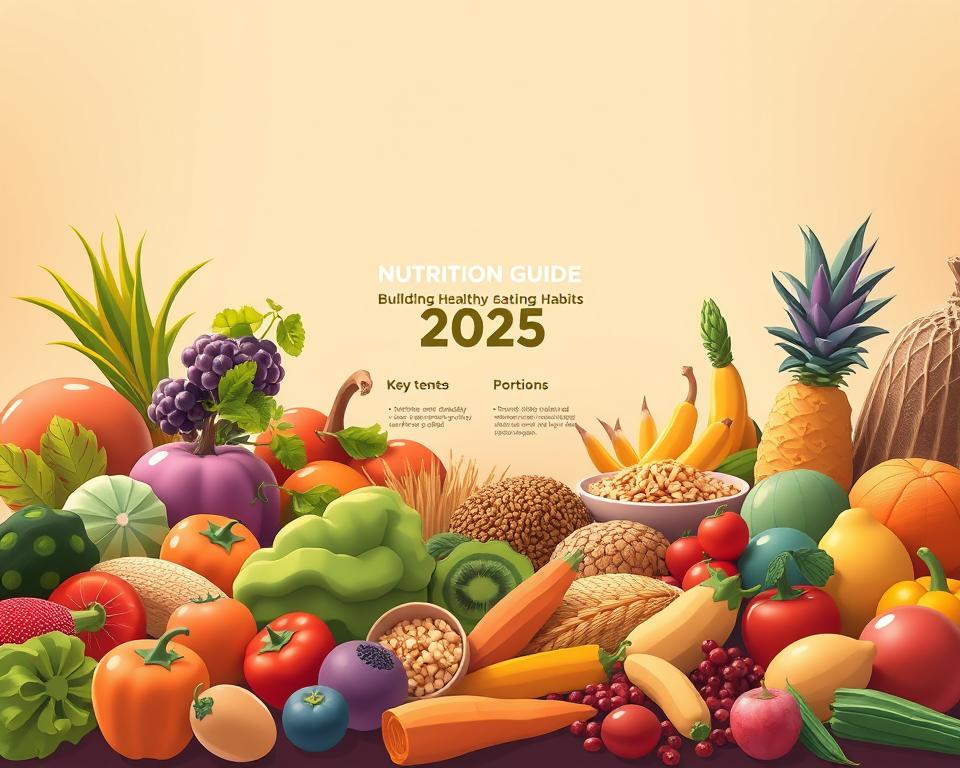Duyurular
superfoods nutrition, can everyday ingredients really make a difference in your diet? Yes — but not as miracle fixes. This term is mostly marketing, yet many familiar foods like dark leafy greens, berries, beans, nuts, yogurt or kefir, olive oil, mushrooms, and modest servings of seafood show up in research for their beneficial nutrients.
You’ll find tips here to use these foods in simple, family-ready meals. Think frozen berries in smoothies, canned beans in chili, bulk nuts for snacks, and quick fish portions twice a week to balance omega-3s while lowering contaminant risk.
Balance matters, not chasing a single item. We focus on practical swaps, label-reading, and kitchen ideas that save time and money. This is friendly, informational guidance — not medical advice — and you’re encouraged to consult qualified professionals for personalized support.
How to Think About “Superfoods” Today
Rather than chase a single ingredient, focus on variety, flavor, and how foods fit your life.
“Superfood” is a marketing term, not a research-based definition. Many items earn that label, but no single food prevents disease. Look at nutrient density — vitamins, fiber, minerals, and healthy fats — within your daily calorie needs.
Duyurular
Balance and variety matter more than any headline item. You can mix vegetables, legumes, whole grains, seafood or other proteins, fermented dairy or plant choices, nuts, seeds, herbs, and spices across the week.
Use simple signals when you shop: shorter ingredient lists and lower added sugar often mean better product content for your needs. Watch portion sizes too; calorie-dense choices add flavor and benefits, even in small amounts.
- Think culinary: color, texture, and cultural fit.
- Favor minimally processed foods over ultra-processed ones that raise long-term risk.
- Seek consistent, balanced plates across days, not perfection at one meal.
When you want clarity, check trustworthy research sources or talk with a registered dietitian for personalized guidance. Treat so-called superfoods as helpful building blocks, not magic fixes.
Duyurular
Leafy Greens and Colorful Vegetables That Power Your Plate
A few simple vegetable swaps can boost the color and fiber on your plate.
Dark leafy greens are an excellent source of folate, iron, calcium, magnesium, vitamin C, and fiber. Rotate kale, spinach, collards, and Swiss chard through the week. Sauté greens with garlic and olive oil or wilt them into eggs and soups for a quick boost of nutrients.
Non-starchy vegetables like broccoli, cauliflower, carrots, Brussels sprouts, tomatoes, and green beans deliver vitamins, minerals, fiber, and phytochemicals with few calories. Roast a tray of broccoli, cauliflower, and carrots for easy sides you can reheat all week.
- Blend spinach into smoothies or fold chopped greens into stews for added antioxidants.
- Use shredded cabbage or kale as a hearty salad base; massage with olive oil and lemon.
- Keep frozen mixed veggies on hand for quick stir-fries and to cut waste.
Small techniques—roasting, sautéing, or simple seasonings like citrus zest and chili flakes—make vegetables taste great. Over time, regular plates with varied colors can help reduce risk for chronic conditions and support overall health.
Berries and Citrus for Antioxidants and Bright Flavor
A handful of berries or a squeeze of citrus can lift a simple dish into something memorable.
Berry staples include blueberries, strawberries, and raspberries. They provide fiber, vitamins, and antioxidant phytonutrients such as anthocyanidins. Frozen berries are a smart pantry item. Keep them for smoothies, oatmeal, and yogurt bowls so you get color and antioxidants year-round.
Berry staples: blueberries, strawberries, raspberries, and more
Toss sliced strawberries into spinach salads with walnuts for a sweet‑savory texture. Stir a handful of berries into pancake batter or muffins to boost flavor and visual appeal. Try adding frozen blueberries to hot cereal; they thaw fast and add sweetness without added sugar.
Citrus choices: vitamin C and culinary uses without extra sugar
Citrus fruits—lemons, limes, oranges, grapefruit—deliver vitamin C and phytonutrients like hesperidin and naringenin. Use zest and juice to brighten dressings, marinades, and roasted vegetables. Segment oranges over grain bowls or fish tacos for a fresh contrast.
“Choose whole fruit over juice when you want more fiber and slower-to-digest carbs.”
- Mix lemon and lime into sparkling water for a low‑sugar refresher.
- Freeze leftover lemon juice in ice cube trays to portion sauces.
- Vary berries and citrus by season to broaden vitamins and phytonutrient variety.
For a quick read on fruit with strong research backing, see super fruit for extra context about health benefits and minimal risk when you choose whole fruit over sugary options.
Yogurt and Kefir: Fermented Favorites for Everyday Eating
Yogurt and kefir are simple pantry allies that add protein, calcium, and tang to meals.
Common styles available in U.S. stores
Regular yogurt is smooth and mild. Greek yogurt is thicker and higher in protein. Kefir is drinkable and often has more probiotic strains. Plant-based options use soy, almond, oat, or coconut bases and vary in protein and calcium.
What “live and active cultures” means
“Live and active cultures” signals that fermentation microbes were present when the product was packaged. These cultures can support gut-related health as a food source, though effects differ by strain.
Smart picks and savory uses
Keep plain, unsweetened tubs so you control sweetness and added sugar. Choose Greek for extra protein and a creamy dip base like tzatziki or raita. Use kefir in smoothies or overnight oats for a pourable tang.
“Pick fortified plant-based tubs if you want calcium like dairy, and compare labels for saturated fat or cholesterol.”
- Read the nutrition panel for added sugar and calcium content.
- Use yogurt as a marinade to tenderize meats and add flavor.
- Make savory bowls with plain yogurt, olive oil, herbs, and tomato.
Legumes and Beans: Affordable, Fiber-Rich Staples
Keep a stash of canned and dried legumes so you can build quick, filling meals any night of the week.
Legumes—including beans, lentils, peas, and soy—give you B vitamins, minerals, and plant protein. They add fiber that helps you feel full and supports a balanced diet. Regular intake links to better cardiometabolic markers and long-term health.
Cooking tips, textures, and ways to build meals
Batch-cook lentils or beans on the weekend and freeze portions for tacos, soups, and grain bowls. Canned beans are a fast fallback; rinse them to cut sodium and improve texture.
- Combine beans with sautéed onions, garlic, and spices; finish with citrus or vinegar for brightness.
- Use red lentils to thicken soups without cream; they cook fast and add body.
- Blend chickpeas with tahini, lemon, and olive oil for homemade hummus that stretches sandwiches and snacks.
- Mix beans with roasted vegetables and herbs for a hearty salad that keeps for lunches.
Rotate different legumes to vary flavor and widen your minerals and protein sources. Small swaps save money and make your weekly plates more satisfying.
Nuts and Seeds: Heart-Healthy Fats with Crunch
A small handful of nuts or seeds can lift a meal with texture and flavor.

Everyday mixes: walnuts, almonds, pistachios, and peanuts
Nuts provide fiber, plant protein, and unsaturated fats that support a balanced diet. Aim for a palm-sized portion (about 1 ounce) as a snack or salad topper.
Build a simple trail mix with walnuts, almonds, and pistachios plus a few dark chocolate chips for occasional sweetness.
Small seeds, big uses: chia, flax, hemp, pumpkin, sunflower
Seeds are an excellent source of fiber and fatty acids. Stir chia seeds into overnight oats or yogurt for a pudding-like texture.
- Sprinkle pumpkin and sunflower seeds over salads or soups for a toasty crunch.
- Try flax or hemp seeds on smoothies or avocado toast for subtle nutty flavor.
- Blend soaked cashews to make creamy, dairy-free sauces and dressings.
Store nuts and seeds in airtight containers in the fridge or freezer to keep oils fresh. Keep a jar of toasted nuts on the counter for quick, portion-aware snacking.
“A small handful can be a good source of flavor and richness without overwhelming your plate.”
Seafood Spotlight for superfoods nutrition
Seafood brings bright flavors and steady protein to weekly meal planning. It also supplies omega‑3 fatty acids, B vitamins, potassium, and selenium in practical portions.
Salmon and simple preparations
Salmon is an easy way to add fatty acids to your plate. Try pan‑searing with lemon, baking with herbs, or grilling with a brush of olive oil for quick weeknight meals.
Rotate white and oily fish
Mix oily fish (salmon, sardines, mackerel) with white fish (cod, haddock, pollock) to vary texture and minerals. White fish cooks fast; oily fish brings more fatty acids and flavor.
Include shellfish for variety
Add shrimp, crab, clams, mussels, or scallops to pasta, paella, or broth soups. Shellfish cook quickly and are a lean source of protein and trace minerals.
Sustainability and safety notes
Aim for two to three seafood meals per week to balance benefits and limit contaminant risk. Check labels or retailer guidance for sustainable sourcing and compare nutrition panels if you watch cholesterol or sodium.
“Keep frozen fillets on hand — they thaw fast and help reduce waste.”
- Try fish tacos with cabbage slaw and lime yogurt for a family-friendly dish.
- Use canned salmon or sardines in salads and patties for pantry convenience.
- Use citrus, garlic, and herbs to let the fish flavors shine without heavy sauces.
Olive Oil, Avocado, Mushrooms, and Seaweed: Pantry-to-Plate Upgrades
Simple pantry staples can add big flavor and real food benefits to everyday meals.
Olive oil and avocado: versatile sources of heart-healthy fats
Extra-virgin olive oil is rich in monounsaturated fats and polyphenols. Use it to dress salads or finish soups so the aroma stays bright.
Avocado brings fiber and MUFAs. Mash it on whole-grain toast or cube it into salads for a creamy texture that also supports heart health.
Mushrooms: unique antioxidants and umami cooking ideas
Mushrooms contain unique antioxidants like ergothioneine and add deep umami with little fat. Sear them in a wide pan without crowding to get good browning.
Roasted mushrooms make great meal prep — fold them into omelets, grain bowls, or sandwiches for extra flavor.
Seaweed: iodine, minerals, and easy snacks and soups
Seaweed supplies iodine, vitamin K, folate, and fiber. Snack on roasted sheets or crumble them over rice bowls for a salty, savory lift.
Add a strip of kombu to simmering beans or broths for subtle ocean flavor, then remove before serving.
Herbs and spices: turmeric, ginger, garlic, and everyday seasonings
Build spice-forward blends—turmeric with black pepper, or ginger with garlic and scallions—to layer aroma and color.
- Use olive oil to finish dishes; save high‑heat oils for searing.
- Mash avocado with lemon and chili flakes for quick toast.
- Sear mushrooms to concentrate umami and store leftovers for the week.
- Keep roasted seaweed and fresh herbs on hand to boost flavor fast.
“Small amounts of quality oils, herbs, and sea vegetables can be a good source of flavor that elevates simple ingredients.”
In short, these pantry choices add heart-friendly fats, antioxidants, vitamins, and minerals while fitting many culinary traditions. Use them often in small amounts to enjoy steady health benefits and diverse flavors without fuss.
Putting It Together: Simple Daily Habits That Stick
A few repeatable moves—smart shopping, batch prep, and balanced bowls—make eating well easier.
Build a balanced bowl: plant base, protein, color, and crunch
Start with a plant base: greens or whole grains. Add a protein—beans, yogurt, tofu, fish, or chicken—for staying power.
Layer colorful vegetables for vitamins and minerals. Finish with a crunchy topper like nuts or seeds for texture and extra fiber.
- Example bowl: brown rice, sautéed spinach, canned beans, roasted peppers, pumpkin seeds, and a lemon-yogurt dressing.
- Stretch meals: add more vegetables or beans to stretch portions while boosting fiber and nutrients.
- Flavor tip: a small sauce (tahini-lemon or olive oil with garlic) makes simple ingredients pop.
Shop and store smarter: frozen berries, canned beans, bulk nuts
Keep a “smart freezer” stocked with frozen berries, spinach, and fish fillets. Frozen and canned options are a good source of vitamins and preserve nutrient content.
Maintain a tidy “cantry” with beans, canned tomatoes, and tuna or salmon for quick meals that cut waste and save money.
- Buy nuts and seeds in bulk and store them chilled to keep oils fresh.
- Use clear bins so you see produce and ready snacks and actually use what you buy.
- Plan three dinners you will cook this week; fill gaps with pantry bowls and frozen-friendly recipes.
“Small habits—visible food and a short plan—reduce waste and help you stick with a balanced diet.”
Çözüm
Aim for plates that blend color, texture, and familiar flavors so meals feel both nourishing and joyful. Small repeats—roasted greens, a bowl with beans, a handful of nuts, or a citrus splash—add up over the week.
Balance, variety, and ease matter most, so treat these ideas as a flexible toolkit that matches your tastes and schedule. Explore seasonal produce and regional recipes to keep cooking fun and sustainable.
Focus on steady, simple habits rather than perfection at every meal. If you have questions about your personal health or the risk of specific disease, speak with a registered dietitian or healthcare professional for tailored guidance.



